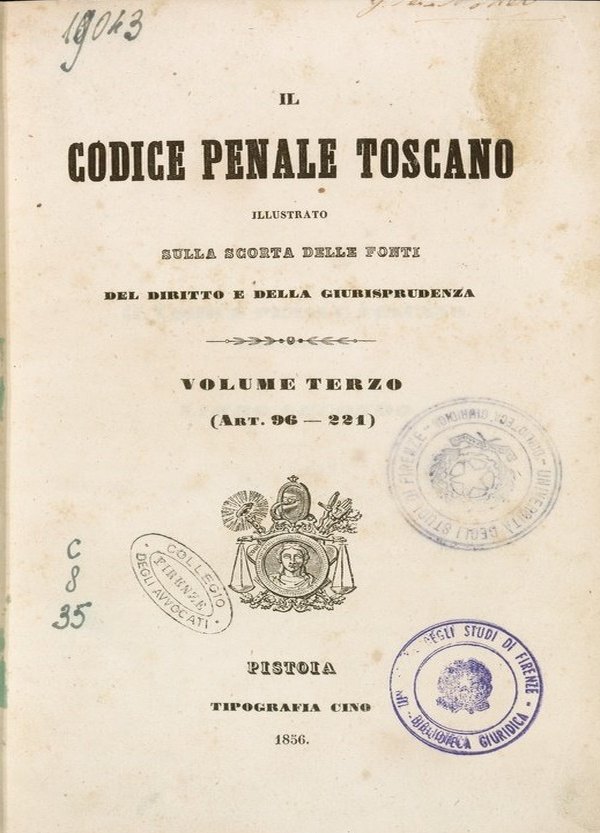Tuscan Criminal Law Codices of the Nineteenth Century
Go to the volumes of the collection | See on Wikipedia:

The Tuscan criminal law tradition has an ancient regime origin. It was an enlightened Tuscan sovereign, Pietro Leopoldo, who, after careful personal study, signed in Pisa on 30 November 1786 the law that reformed criminal law with which - a unique case in Europe - the death penalty is replaced by the punishment of forced labour for life, applying the ideas of Cesare Beccaria.
It is this law, later known as the “Leopoldina”, that marks the origin of the Tuscan tradition in the field of criminal science. It is true that, shortly after, the death penalty was reintroduced in the Grand Duchy, but it is also true that even in the years of the restoration it was rarely applied in Tuscany (and then definitively repealed in 1859).
The politically mild climate favoured the studies of criminal law that developed also in autonomous form with respect to the prevailing French tradition. This includes works such as the Scritti germanici di diritto criminale by Francescantonio Mori and the Programma del corso di diritto criminale (study programme in criminal law) held by Francesco Carrara at the University of Pisa. And more than France, it was Germany that was used as an example in the only codification that took place in the Grand Duchy: the Penal Code of 1853, the best outcome of the Tuscan legal science and the most technically advanced body of criminal rules among those of the pre-unitary Italian States. So advanced that it closely influenced the construction of the first penal code of the unified Kingdom of Italy, the Zanardelli Code of 1889, which eliminated - not by chance - the death penalty throughout Italy. The digitized works - some of which are rare and difficult to find - show part of the efforts of the Tuscan doctrine that led to the drafting of the Code of 1853, together with the most well-known commented edition of the Code itself.
Last update
23.12.2025